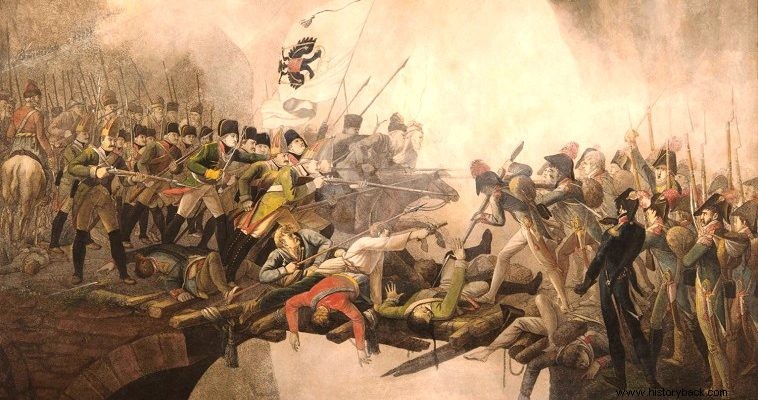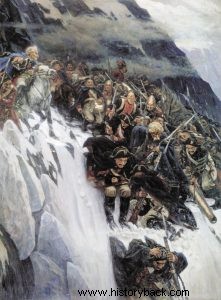
Alexander Vasilievich Suvorov is a special case in military history. Although he was Russian, he had Swedish and Armenian blood in his veins. Although noble, he began his career in the army as a common soldier to reach with his merit, a rare thing at that time, the highest military positions in Russia.
His father's family had Swedish roots. His ancestors had settled in Novgorod, Russia around 1622. His mother was of Armenian origin. Alexander Suvorov was born in Moscow in 1730. His father was a high-ranking officer.
However, little Alexander was a cocky and weak-willed boy who was not destined for the military profession. But he really liked to learn. He was taught mathematics and astronomy and above all history. He also learned foreign languages, fencing and shooting.
At the age of only 12 he enlisted as a soldier in the Semenovsky Regiment of the Tsarist Guard, while a little later he started attending an officer school. In 1748 he was promoted to corporal and in 1750 to sergeant. Completing his studies, in 1754, he was appointed with the rank of lieutenant in the Ingermaladsky Infantry Regiment (SP). With the outbreak of the Seven Years' War (1756-63) he quickly rose to the rank of lieutenant colonel , in 1758, and was appointed commander of the fortress of Memel.
In 1759 he was assigned to Marshal Fermor's army which invaded Prussian territory. He took part in the battles of Palzig and Kunersdorf. But later he was assigned to logistics. In 1760 he returned to active duty and was placed on Fermor's staff. He participated in the occupation of Berlin. In 1761 he took command of the Tver Dragoon Regiment and fought exceptionally well in Pomerania and was even wounded. In 1762 he was given command of the Astrakhan SP.
In 1768 he took part in the war against Poland occupying Cracow, having been promoted to lieutenant general. He then fought against the Turks until 1774, earning the rank of lieutenant general. He participated in the suppression of the Pugachev Revolution, while in the period 1774 – 1783 he served in the Crimea conquered by the Russians and in the Caucasus.
In 1786 he was promoted to general. The very next year and until 1792 he fought against the Turks again, winning a series of victories together with the Austrian allies of Russia (Battle of Fosksani, Battle of Rimnik, capture of Ismaili). In 1787 he was seriously wounded in the battle of Kyburn and was saved thanks to the heroism of a grenadier, Stepan Nikitov who protected him from the Turks. In 1794 he suppressed another Polish uprising and on November 4 captured Warsaw where Russian soldiers massacred thousands of Polish civilians. However, Suvorov was promoted to marshal.
After the death of Tsarina Catherine the Great, Suvorov was demobilized by the new Tsar Paul I. In 1799, however, he was brought back into active service and sent to Italy to fight against the French. He crossed the Alps like Hannibal and won amazing victories at Cassano, Trebbia and Novi. Nevertheless, when he returned in 1800 to Russia, the tsar treated him badly. The suffering veteran and now old man Suvorov could not stand it and died a few days later on May 18, 1800.
The military legacy
Suvorov had as his models M. Alexander, Julius Caesar, Gustavus Adolphus and Charles XII of Sweden. He studied military history a lot and learned lessons from there that he applied to his battles. He appreciated the offensive tactics, uttering the famous saying that "the bullet is a madman, only the bayonet is a good boy", or "I prefer to die than to defend myself".
A fan of hard training, he always applied the saying he coined:"Train hard, fight easy", or "fight with skill, not numbers". Suvorov was the ideal commander. As he himself admitted he was the marshal, the head of logistics "and everything, up to corporal", of his men who literally worshiped him and willingly followed him into battle.
Although he lived in an era when linear tactics predominated, he himself was an innovator and extensively used deep formations equivalent to an assault phalanx and even denser, especially against the Turks . The advantage of deep formations was that it could move faster without losing its cohesion, like the linear formation, it acted as an offensive thrust against the enemy and was not vulnerable to attacks by the enemy cavalry.

Suvorov (on horseback left), in the Alps with his men.
